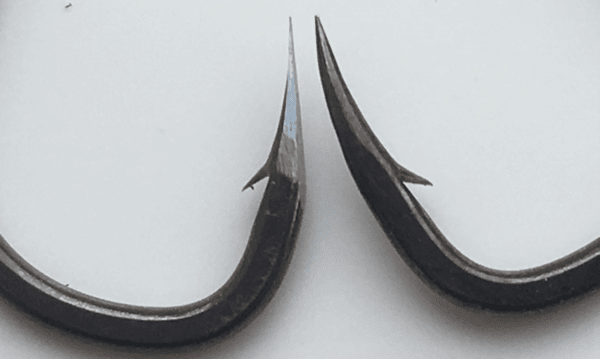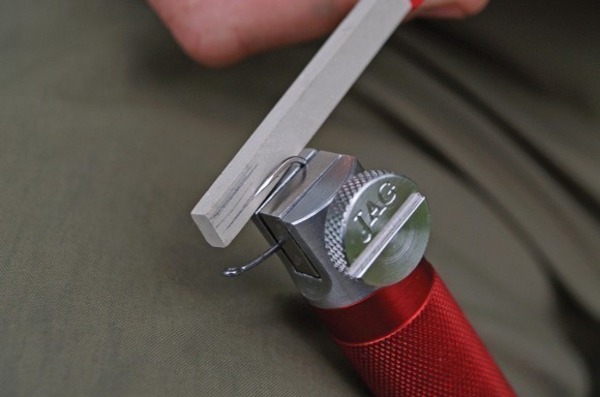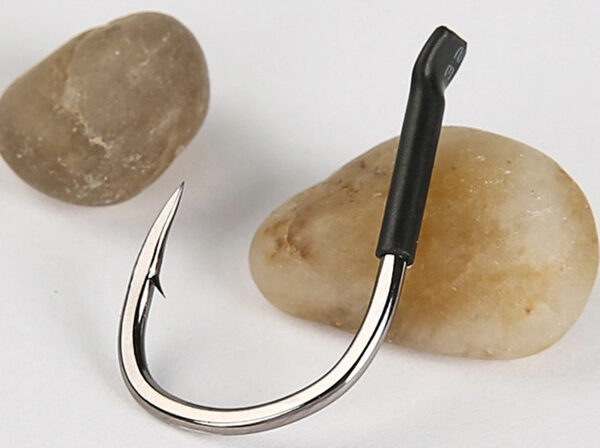How to Sharpen Fishing Hooks
Sharp hooks are very underrated amongst fisherman.
Without them, you can miss tons of fish and reduce your hook up percentage dramatically.
And obviously, no competent angler wants that.
So you need to know how to sharpen fishing hooks so that you can always set yourself up for success on the water.
How to Sharpen Fishing Hooks
Step 1: Identify Dull Hooks
To check if your fishing hooks are dull, start by visually inspecting them for signs of wear, such as nicks or corrosion.
Run your fingernail along the point and barb to see if it catches; a dull hook will slide smoothly.
Test the hook on paper or fabric to assess its ability to pierce cleanly.
When fishing, note if you’re missing strikes or not hooking fish effectively, which could indicate dull hooks.
Additionally, compare the old hooks with new ones to gauge their sharpness.
Step 2: Get a Hook Sharpener
We will discuss how to sharpen hooks without a sharpener later in the article, but it is much easier and more reliable to just invest in a high quality hook sharpener.
They are super cheap and easy to use, so it is well worth it to get one.
Step 3: Sharpening Technique and Motion
- Secure the Hook: Hold the hook securely with a pair of pliers or a tight grip.
- Angle Adjustment: Position the hook at a 20-30 degree angle to the sharpening tool.
- Light Pressure: Apply light pressure while sharpening to avoid removing too much material.
- Single Direction: Stroke the sharpening tool along the hook’s point in one direction only. Move the hook along the sharpener in the direction of the hook point.
- Consistent Motion: Maintain a consistent sharpening motion for each stroke.
- Equal Number of Strokes: Ensure an equal number of strokes on each side of the hook to maintain symmetry.
- Fine-Tuning: If necessary, make minor adjustments to the angle or pressure to achieve optimal sharpness.
- Clean the Hook: After sharpening, remove any metal shavings or debris to prevent contamination of the fishing line or bait.
Step 4: Test and Fine Tune the Hooks
After 5-6 strokes on each side of the hook, test out the sharpness.
To test the sharpness of the hook, run the hook’s point along your fingernail or touch it to a piece of paper.
A sharp hook will grip and leave a slight groove or cut into the paper cleanly with minimal pressure.
If you find that the hook isn’t as sharp as desired, don’t hesitate to fine-tune it.
Make minor adjustments to the angle or pressure when sharpening to achieve the optimal sharpness needed for effective fishing.
Step 5: Marker or Vaseline (Optional)
Use some vaseline or a marker to put a light coat over the point of the hook.
This will help to reduce the shine and reflection of the warm down hook point.
If the hook point is super shiny, it is a bit more visible and can be seen easier by fish.
I will usually take this extra step, but it is optional because let’s be honest, there is already plenty of visible metal, hooks, and rings on lures.
So it may not make a huge difference, but I like to take the extra step for piece of mind if nothing else.
How To Sharpen Circle Hooks
The process is a bit different with circle hooks. You can’t glide the hook down the hook file because the point is turned inwards.
Instead, get a thinner hook file that can slide along the small, bent portion of the hook.
Go side-to-side with the file while maintaining a 20-30 degree angler. Work your way around the hook point and the point will get much sharper.
Is Sharpening Your Hooks Worth It?
Sharpening your hooks is 100% worth it. The whole process only takes a minute or two and can increase your hook up ratios by as much as 30%.
If you ask me, that is well worth the cheap price and short time that it takes to sharpen your hooks.
How Often Should You Sharpen Fishing Hooks?
Hook sharpening frequency will depend on how often you use the hook or lure, how many fish you catch on it, what type of structure you fish it in, and also how high quality the hooks are.
But some general guidelines would look something like this:
- After 30-40 fish caught on the hooks
- Every 7-8 trips if you are fishing in and around rocks
- Every 15-20 trips if you are fishing in and around wood
- If you notice that you are missing or losing more fish than normal
These are general rules of thumb.
Thick hooks that come on jigs, spinnerbaits, and other single hook lures will not require hooks sharpening as often.
And small hooks like jerkbait, crankbait, and fly lures will require more frequent sharpening.
Also read: What to Take On a Fishing Trip?
What Grit for Sharpening Hooks?
In my eyes, the higher the grit the better. This is because the higher the grit count, the smoother and sharper you can get the hook.
The trade off is that the higher the grit, the longer it will take to sharpen the hook.
But it still only takes a couple minutes either way. So when looking for a sharpener, try to get one with at least 500-600 grit.
This is pretty standard so it should be a problem to find in all the best fishing hook sharpeners.
How to Sharpen a Hook without a Hook File
Ideally, you would use a fishing hook file. But if you are in a pinch or have absolutely no budget, you can use stones and rocks to file the hook point down.
I have actually done this a couple times myself when I couldn’t find my sharpener.
The technique and process is the same, it is just a bit harder, takes a bit longer, and doesn’t get as smooth of a point.
Rocks and stones aren’t the coolest fishing gadgets, but they work if you have no other option.
Reeling this In
Dull hooks can lead to missed opportunities and reduced hook-up percentages.
Therefore, knowing how to sharpen fishing hooks is crucial for success on the water.
By following a simple process of identifying dull hooks, obtaining a hook sharpener, mastering the sharpening technique, and testing and fine-tuning the hooks, anglers can maintain sharpness and increase their chances of landing more fish.
Whether using a dedicated hook file or makeshift methods, keeping hooks sharp is a worthwhile practice for every angler.













